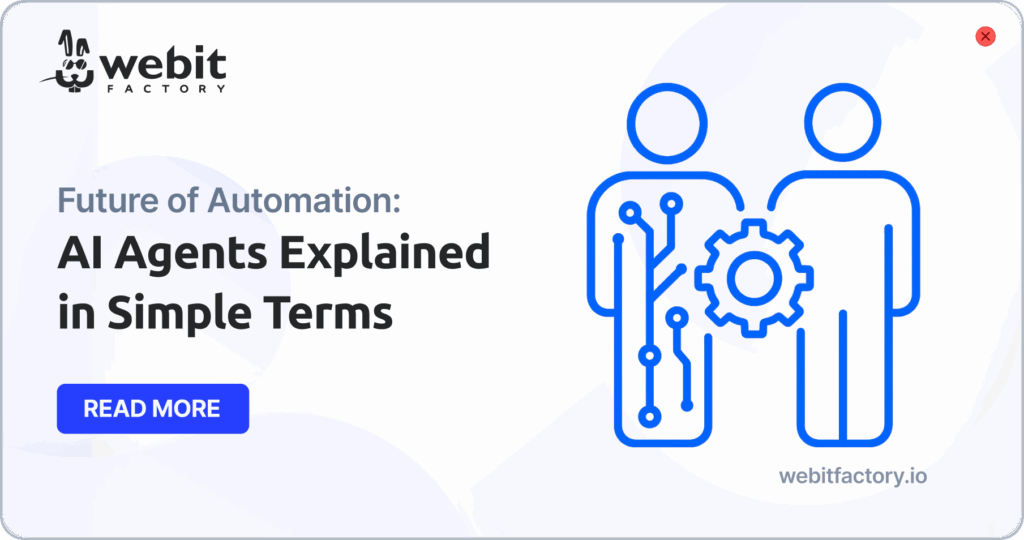AIMultiple reports that more than half of European manufacturers have adopted artificial intelligence (AI); specifically, there is a 35% adoption of integrated automation in the manufacturing industry.
Picture a manufacturing process where efficiency and precision go hand in hand, downtime is kept to a minimum, and your systems operate in perfect harmony. For European companies, automation isn’t just a vision of the future—it’s an essential move to enhance productivity and maintain a strong competitive position in a market that’s becoming ever more demanding.
However, challenges like system compatibility and potential disruptions often hold businesses back. Concerns about downtime or losing functionality are valid, but they’re far from impossible to overcome. With the right approach, automation can revolutionize your operations, driving growth and innovation.
Overcoming Challenges in Integrating Automation
Manufacturers often worry that automation might disrupt their current operations, causing costly downtimes or losing the functionality they depend on. It’s a common concern, and it’s completely understandable—no one wants their production line to grind to a halt. But here’s the good news: these challenges can be managed effectively with the right approach.
Start by conducting a thorough evaluation of your existing systems to identify where automation fits best. This helps you address potential issues before they arise. A phased integration plan is also key. By rolling out automation gradually, you can minimize disruptions and give your team time to adapt without feeling overwhelmed.
Additionally, partnering with experienced system integrators can make the process much easier. With careful planning and the right support, integrating automation doesn’t have to be daunting—it can be a game-changer for your business.
The Benefits of Integrating Automation in Manufacturing
From boosting efficiency to enhancing product quality and market agility, automation has the power to transform operations and set businesses apart in an increasingly competitive global market. Here are some of the key advantages of embracing automation:
- Cost Reduction: Automated systems excel at performing repetitive tasks more efficiently than human labor, reducing errors and waste while delivering significant cost savings over time.
- Improved Efficiency: Automation enhances precision and speed, ensuring faster production cycles and consistently high-quality output, helping manufacturers meet both deadlines and quality standards.
- Enhanced Competitiveness: By adopting cutting-edge technologies, European manufacturers can respond quickly to market demands, adapt to new opportunities, and secure a stronger position in the global marketplace.

If you’re curious to dive deeper into the many benefits of integrating automation in manufacturing, check out this insightful report from the European Agency for Safety and Health at Work. It’s packed with real-world examples and practical details that bring the advantages of automation to life!
Step-by-Step Guide to Integrating Automation
1. Assessment
Start by evaluating your current systems to pinpoint areas where automation can deliver the greatest impact. This helps you focus resources where they’ll make the biggest difference.
2. Planning
Create a detailed integration plan that outlines clear timelines, allocates necessary resources, and addresses potential risks. A solid plan sets the foundation for a successful implementation.
3. Pilot Testing
Test the automation in a controlled environment to ensure functionality and address any issues before scaling up. This step helps minimize risks and build confidence in the new system.
4. Training
Equip your team with the knowledge and skills they need to work seamlessly with the new automated systems. Comprehensive training ensures your workforce is ready for the transition.
5. Full Implementation
Deploy the integrated automation across your production line, monitoring its performance closely. Be prepared to make adjustments to optimize efficiency and maintain smooth operations.
Are There Proven Results of Automation Transforming Manufacturing?
Numerous success stories highlight the transformative power of automation in manufacturing. For instance, a leading automotive manufacturer is reported in a case study to have implemented AI-driven robotics to optimize their assembly line processes, resulting in a 30% increase in production efficiency and a 50% reduction in error rates. Such examples showcase how integrated automation isn’t just about replacing manual tasks—it’s about enhancing precision, consistency, and overall performance.

If you’re looking for more inspiring success stories, check out this comprehensive list of intelligent automation integration case studies. From reducing processing times to achieving higher accuracy rates, these real-world examples demonstrate how businesses across industries have unlocked significant value by embracing automation. It’s a great resource to see what’s possible and envision the potential for your own operations.
Bringing automation into your existing manufacturing systems might seem challenging at first, but with the right planning and execution, the rewards are undeniable. For European manufacturers, integrated automation is more than just a technical upgrade—it’s an opportunity to enhance efficiency, reduce costs, and secure a stronger position in the global marketplace.
By taking a structured approach to integration and learning from real-world success stories, manufacturers can turn this transition into a strategic move that drives growth and innovation. Whether it’s minimizing disruptions, optimizing performance, or boosting productivity, automation is the key to future-proofing your operations.
Ready to take the first step?
Related Articles

AI Agents Explained in Simple Terms
Discover what AI agents are, how they work, and why intelligent agents are reshaping automation across industries.

AI Solutions for HR That Transform Hiring and Retention
AI solutions for HR are transforming hiring and retention with faster recruitment, better cultural fit, and lower turnover rates.

Cross-Chain dApps Are Shaping Web3
Cross-chain dApps are shaping Web3 by streamlining UX, improving contract monitoring, and bridging fragmented blockchain ecosystems.
